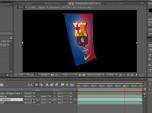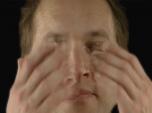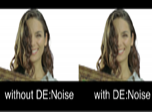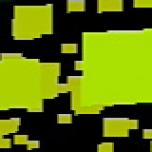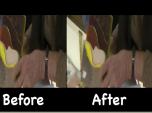Find a Tutorial
-
RE:Map UVW Multipass
See TutorialDescription
Joren Kandel (http://www.thepixellab.net/blog) has provided a Cinema 4D and After Effects tutorial where he shows you how to use RE:Map UV to replace a C4D UV pass with a 2D texture in After Effects.
This Tutorial Includes
- Video
-
RSMB Vectors from C4D to AE
See TutorialDescription
In this tutorial you will learn how to utilise a motion vector pass from Cinema 4D to introduce motion blur in to your final comp, with RE: Vision Effects Reel Smart Motion Blur Vectors Plugin.
If Play link does not work, try this external link
This Tutorial Includes
- Video
-
Twixtor: When and How to use Tracking Points
See TutorialDescription
This Tutorial shows how to get better results using Tracking Points for more complex shots and to help get rid of warping or ghosting. Tracking Points are available in Twixtor Pro for AE, FCP (pre-FCPX), Premiere Pro, Nuke & OFX hosts such as Scratch & Composite.
This Tutorial Includes
- Video
-
Better Retiming using a Matte
See TutorialDescription
This Tutorial shows how to get better tracking using a matte to separate your footage into multiple layers. Multiple layers are available in Twixtor Pro for AE, FCP, Premiere Pro, and Twixtor for Smoke, Flame, Fusion, Nuke & OFX hosts such as Scratch & Composite.Author: Lori FreitagCompany: RE:Vision Effectslink: http://revisionfx.com/products/twixtor/This Tutorial shows how to get better tracking using a matte to separate your footage into multiple layers. Multiple layers are available in Twixtor Pro for AE, FCP, Premiere Pro, and Twixtor for Smoke, Flame, Fusion, Nuke & OFX hosts such as Scratch & Composite.
This Tutorial Includes
- Video
-
Frame Edge Issues and Twixtor
See TutorialDescription
This Tutorial explains when it is appropriate to use Smart Blend and shows regular Twixtor with Inverse and with Forward Warping and compares a panning shot slowed down 10x with and without Smart Blend
Special Thanks to Mark Tekushan for allowing us to use the beach footage. www.mfxs.com
This Tutorial Includes
- Video
-
Twixtor - Fixing Unwanted Warping
See TutorialDescription
This Tutorial explains how to use Motion Sensitivity to avoid unwanted warping in your re-timed shot.
This Tutorial Includes
- Video
-
DE:Noise - Beyond the Basics
See TutorialDescription
This tutorial shows how to use DE:Noise. It continues where the "Essentials" tutorial left off. This tutorial covers some of the more advanced settings to remove unwanted noise from your footage and gives examples so you can easily apply them to similar scenarios. The controls are the same in all supported applications except where I note differences.
Special Thanks to (in order of appearance) for providing and/or allowing us to use their footage for this tutorial: (1) Mark Tekushan for the Noisy Blue screen footage www.markfx.com (2) Sean Wheeler & Zander Schloss for allowing us to use the footage I shot of them playing www.facebook.com/SeanWheelerandZanderSchloss (3) Grant Davis www.vjculture.com (4) Jim Tierney for his whale footage www.whalewatcher.net (5) Michael Sayag for his black & white footage (6) AlFredo from BLT in Italy for the Italian Car footage www.blt.itt
This Tutorial Includes
- Video
-
RSMB for Maya users
See TutorialDescription
This is a four-part tutorial about adding motion blur to a Maya render by first creating a 2D motion vector sequence and then using it with ReelSmart Motion Blur in post production. I’ll be covering Maya 2009’s 2D motion vector pass as well as installation and use of the lm_2DMV shader for earlier Maya versions. Once this technique is part of your pipeline, it can be a tremendous time saver compared with creating (and waiting for) motion blur from within Maya. It also provides the flexibility of applying any amount of motion blur without having to re-render.
This Tutorial Includes
- Web Pages
-
RSMB for CInema 4D users
See TutorialDescription
In this tutorial from Motion Works, Grischa Theissen demonstrates a must-know technique for adding motion blur to your 3D renders in After Effects using ReelSmart Motion Blur.
This Tutorial Includes
- Web Pages
-
DE:Noise - Essential Info
See TutorialDescription
This tutorial shows how to use DE:Noise. It covers the essential settings to remove unwanted noise from your footage and gives examples so you can easily apply them to similar scenarios. The controls are the same in all supported applications.Special Thanks to Michael Sayag for allowing us to use his black & white footage for this tutorial. We would also like to thank Ami Sun for the additional footage used for this tutorialAuthor: Lori FreitagCompany: RE:Vision Effectslink: http://www.revisionfx.com/products/denoise/This tutorial shows how to use DE:Noise. It covers the essential settings to remove unwanted noise from your footage and gives examples so you can easily apply them to similar scenarios. The controls are the same in all supported applications.
Special Thanks to Michael Sayag for allowing us to use his black & white footage for this tutorial. We would also like to thank Ami Sun for the additional footage used for this tutorialThis Tutorial Includes
- Video

 All Products
All Products ARRI Film Lab
ARRI Film Lab Autograph
Autograph Color Genius
Color Genius DE:Noise
DE:Noise DEFlicker
DEFlicker Effections
Effections FieldsKit
FieldsKit PV Feather
PV Feather RE:Fill
RE:Fill RE:Flex
RE:Flex RE:Grade
RE:Grade RE:Lens
RE:Lens RE:Map
RE:Map RE:Match
RE:Match REZup
REZup RSMB
RSMB Shade/Shape
Shade/Shape SmoothKit
SmoothKit Twixtor
Twixtor Video Gogh
Video Gogh Nuke
Nuke 


















